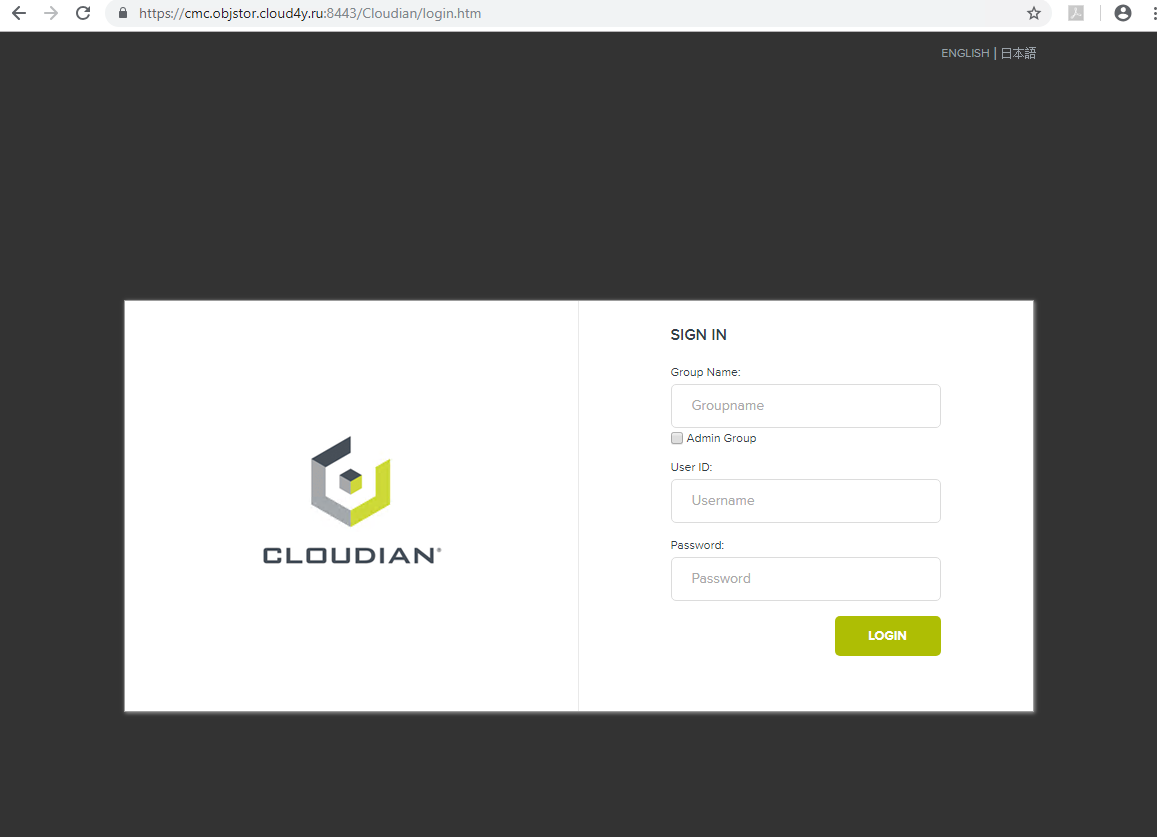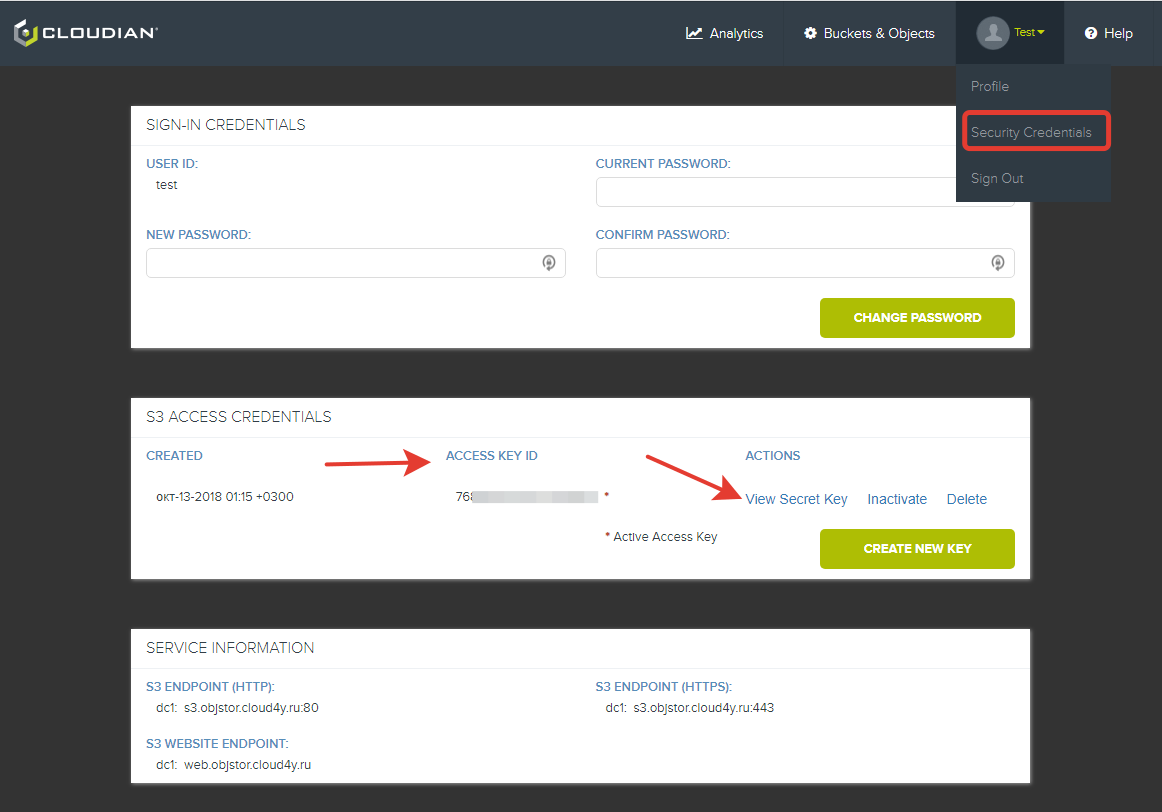ОБЪЕКТНОЕ ХРАНИЛИЩЕ ОТ CLOUD4Y
Наше объектное хранилище построено на платформе компании Cloudian и поддерживает протокол доступа Amazon S3 API. В объектном хранилище данные хранятся без иерархии, в отличие от других способов хранения и каждый объект расположен в пуле данных на одном уровне.
Перечислим основные особенности хранилища:
- Данные располагаются в плоском пространстве и не помещаются в иерархию каталогов.
- Данные располагаются как отдельные объекты.
- Доступ к данным возможен, как через веб-браузер, так и через API

Доступ к панели администрирования услугой осуществляется по адресу:
https://cmc.objstor.cloud4u.com:8443
по учетным данным, полученным от технической поддержки после приобретения услуги.

В панели администрирования клиенты могут:
- получать информацию по статистике
- управлять своими бакетами и объектами
- вносить изменения в свой профиль
Для получения учетных данных для доступа по S3, воспользуйтесь соответствующей вкладкой:

На странице также представлены точки подключения к сервису:
S3 ENDPOINT (HTTP):
s3.objstor.cloud4u.com:80
S3 ENDPOINT (HTTPS):
s3.objstor.cloud4u.com:443
Для подключения, по мимо API могут быть использованы также клиенты с поддержкой S3, например - Cyberduck, а также потребуются данные по: Access Key ID и секретный ключ.
При работе с системой надо учитывать, что:
